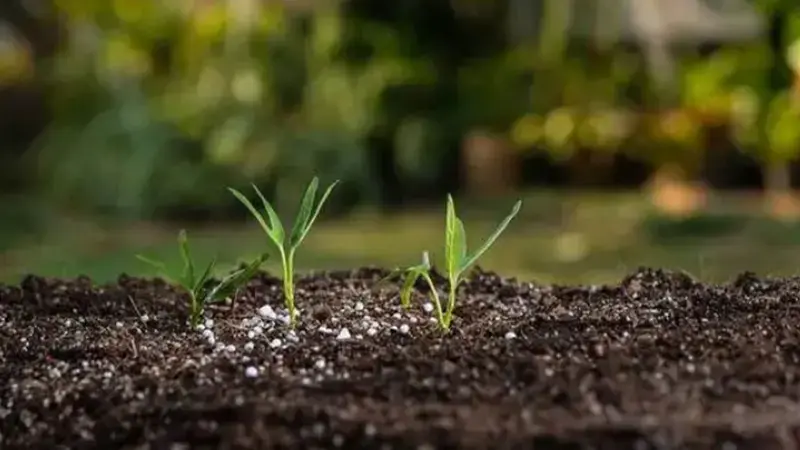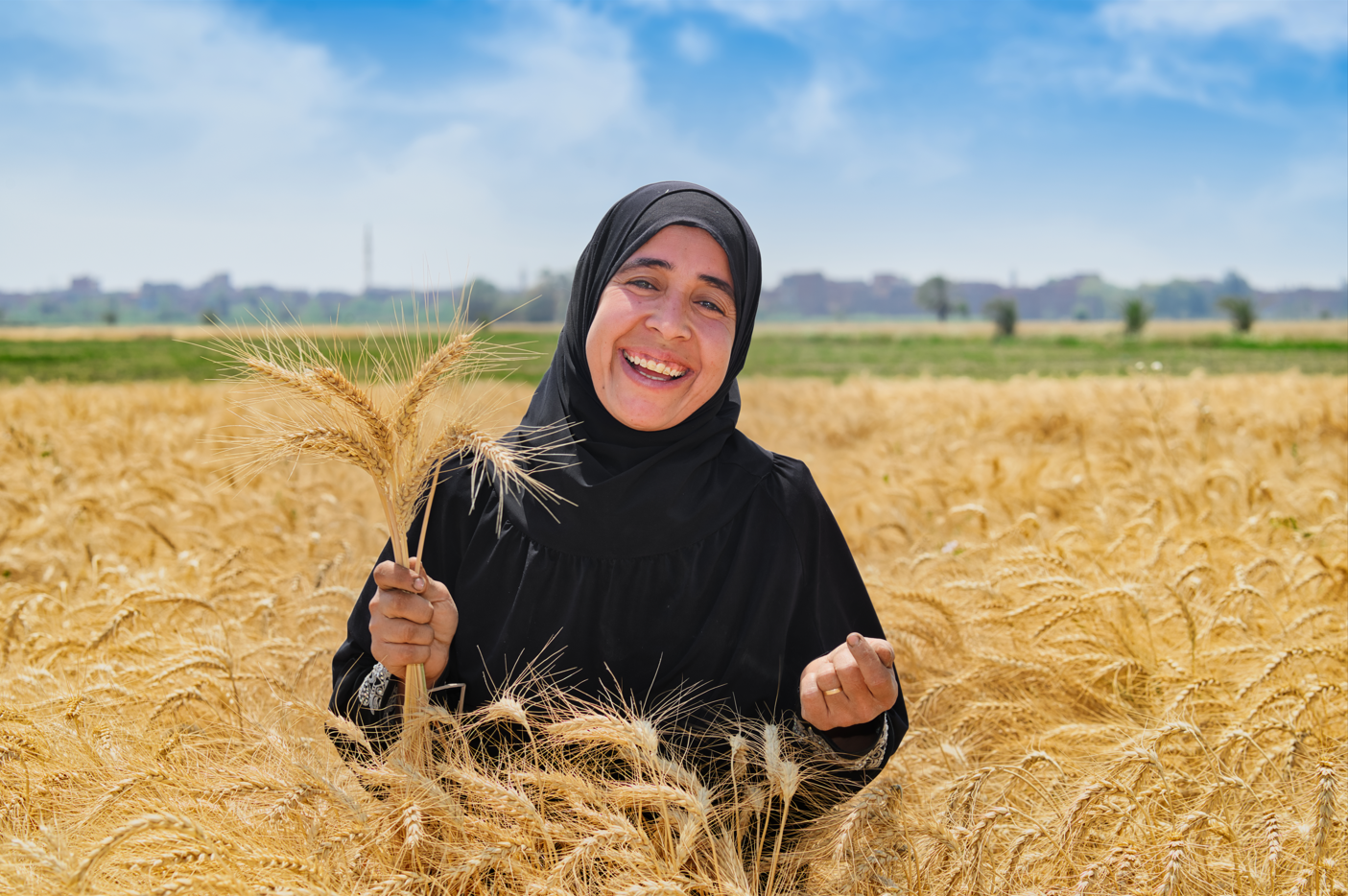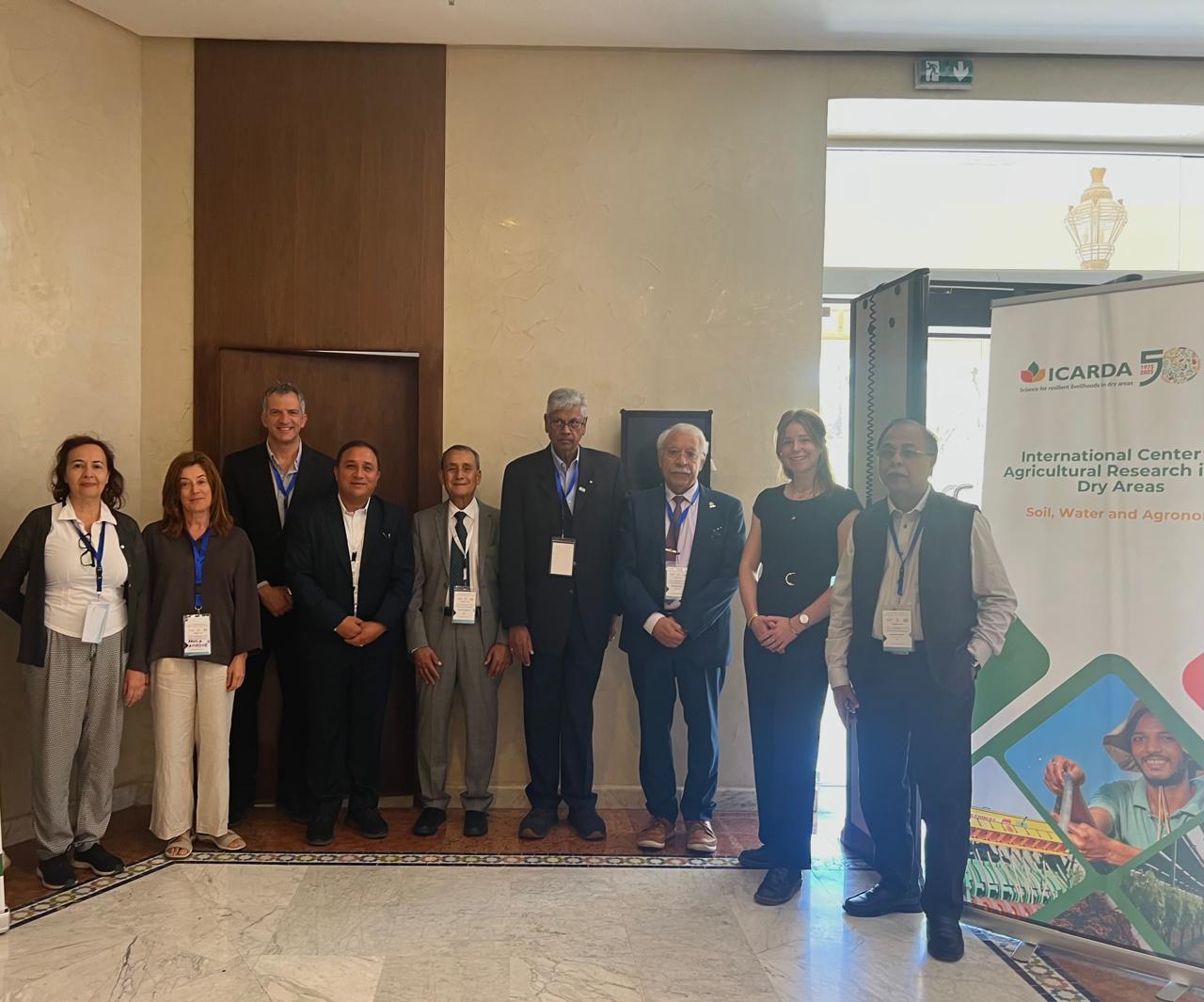Soil: where food begins

By Mina Devkota Wasti - ICARDA Agronomist, and Rachid Moussadek, ICARDA Systems Cropping Agronomist
In the Central and West Asia, and North Africa Region (CWANA) ICARDA scientists and partners are leading efforts to provide solutions to farmers that allow them to continue food production while protecting their soil.
On World Soil Day 2022, the United Nations reminds us that 95% of our food comes from the soil. While that may not come as a surprise, the worrying news is that globally, 33% of our soils are degraded exacerbating challenges for the two-thirds of the world’s population who are at risk of nutrient deficiency.
When crops are harvested, nutrients are leached from the soil. These nutrients can be replenished by fertilizers, but misuse or overuse of fertilizers can increase greenhouse gas emissions, degrade soil and water resources, and can harm animals and humans. In environmentally vulnerable regions such as CWANA, intensive agricultural practices associated with deep tillage, overgrazing and residue removal, and cereal monocropping, can make a bad situation worse. Soils in the region around the Aral Sea for example, already encounter soil erosion, desertification, and salinization, exacerbated by excessive irrigation. Here, and in rainfed farmlands reliant on the Mediterranean climate of coastal Morocco, the unpredictability of precipitation and extreme weather events triggered by climate change are draining soils of their fertility. In short, nutrition-deficient soils produce nutrition-deficient crops, which leads to food and nutrition insecurity.
Protect soil. Not so fast
ICARDA studies indicate that sustainable soil management, such as through conservation agriculture (CA), can increase food production by up to 58%. In ICARDA-led CA programs, practices such as minimum soil disturbance through conservation tillage (CT), permanent soil cover, and crop rotation can be effective on multiple fronts. CA can improve soil health, reduce soil erosion by 50% and boost farm income while helping the agricultural sector achieve climate-smart agri-food systems transformation.
But uptake of CA can be slow. Morocco committed to implementing CA across one million hectares of land by 2030 as part of its Green Generation strategy. Yet less than 2% is currently under CA, a trend mirrored in other Middle East and North African countries. In the Aral Sea Basin, as a response to widespread land degradation, desertification, and subsequent abandonment, ICARDA is helping farmers to manage soil salinity and rehabilitate land through CA. However, local contexts, including variable cropping systems and existing agricultural practices can hinder uptake and the positive impacts of CA practices can take time to emerge, making it hard to convince farmers of the benefits.
Filling in the blanks
ICARDA's Soil, Water, and Agronomy Team is therefore plugging the knowledge gaps around CA's effects to deliver targeted solutions that show a clear impact, for healthy soil in CWANA and beyond. ICARDA researchers are part of field experiments and simulation modeling in two projects studying the clay soils of a rainfed Mediterranean environment in Morocco and salt-affected drylands in Uzbekistan. Researchers also assessed CA's potential to meet environmental and economic goals. In the case of Morocco, four major food crops – wheat, barley, lentil, and chickpea – were compared across CA and CT approaches, while in Uzbekistan, ICARDA studies the sustainability of rice-wheat and cotton-wheat systems under CA and CT practices.
Fertile thinking
Researchers found that for the clay soils typical in a rainfed climate in Morocco, CA scored highly on agronomic, soil fertility, and economic indicators compared to CT in the short and long term. CA practices improved yield stability across variable rainfall years and demonstrated a potential to close yield gaps across crops, in this case, increasing wheat yields by 43%, barley by 8%, lentil by 11%, and chickpea by 19%. Better yields combined with lower production costs compared to CT meant that farmer incomes increased by 19%. Adoption of CA practices, including cereal-legume rotation rather than cereal monocropping, also increased soil organic matter, available phosphorous, exchangeable potassium, and available soil water, enhancing soil stability and thereby the resilience of farms. The region is a climate hotspot, so this experimental and simulation study on CA with contrasting rainfall years provides valuable evidence for agriculture extension workers, policymakers, and farmers to drive CA's wider adoption in Morocco and global regions with similar agro-climatic conditions.
Less salt is healthier
Farming sustainably in salt-affected irrigated drylands such as those in Uzbekistan is challenging. Soil salinity dynamics differ not just concerning tillage and soil cover but also cropping systems, irrigation practices, and fertilizer application. ICARDA researchers found that crop residue retention was beneficial for rice-wheat and cotton-wheat cropping systems, with soil organic carbon increasing by over 300%. However, adding no-tillage approaches, optimal nitrogen application, and water-saving irrigation have the most significant potential, particularly for cotton-wheat systems. The results showed that combining CA practices with fertilizer and irrigation management led to higher yields and net profit (+20%), water productivity (+26%), soil organic carbon (+456%), and energy use efficiency (36%), with decreased soil salinity compared to the CT system.
Conservation agriculture in context
ICARDA's studies are critical to improving the state of knowledge of CA as applied to specific agro-climatic conditions, such as those in the CWANA region. In demonstrating that CA practices can improve crop yields, soil health, and farmer profitability, they indicate a positive pathway to addressing growing regional and global food insecurity and climate change challenges. At the same time, the challenges in CA uptake highlight the need to consider local contexts, farmer needs, and demands and expand the range of management practices beyond soil to irrigation and fertilizer application for optimum results.
------------
This article was developed from the following published papers:
Conservation agriculture improves agronomic, economic, and soil fertility indicators for clay soil in a rainfed Mediterranean climate in Morocco
Authors
Devkota Wasti, Mina
Devkota, Krishna Prasad
Agrawal, Shiv Kumar
--
Managing salinity for sustainable agricultural production in salt-affected soils of irrigated drylands
Authors
Devkota, Krishna Prasad
Devkota Wasti, Mina
Rezaei, Meisam
Oosterbaan, Roland
--
Modeling Soil Organic Carbon Changes under Alternative Climatic Scenarios and Soil Properties Using DNDC Model at a Semi-Arid Mediterranean Environment
Ibtissame Lembaid
Rachid Moussadek
Rachid Mrabet
Ahmed Bouhaouss
--
No-Till Farming in the Maghreb Region Enhancing Agricultural Productivity and Sequestrating Carbon in Soils
Rachid Mrabet
Rachid Moussadek
Mina Devkota Wasti
Rattan Lal



